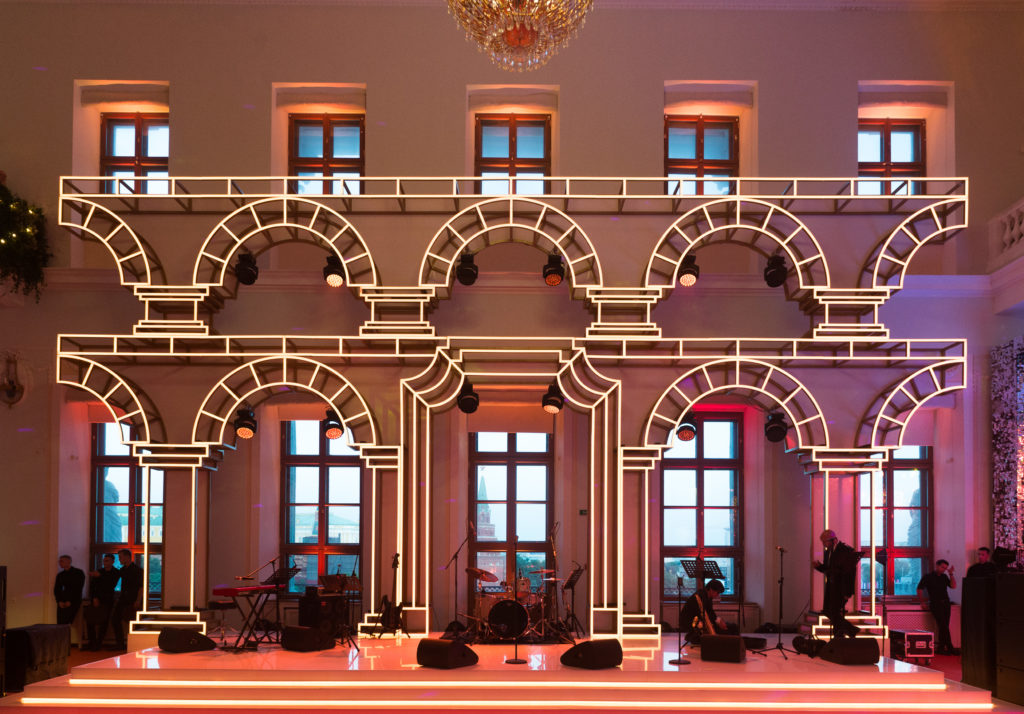Autumn in Moscow is nowhere more glorious than in the historic Alexandrovsky Garden where, past its black iron gates and under the gaze of the Kremlin, one is enveloped in the colors of fall along the tree-lined pathway that leads to a unique cultural complex known as the Moscow Kremlin Museums.
This fall, that historic museum complex is hosting a show dedicated to the illustrious Italian jeweler, Bulgari. The sprawling 500-piece exhibition, titled “Tribute to Femininity: Magnificent Roman Jewels,” is an ode to both Bulgari’s stunning creations and to the beautiful women who have brought its jewels to life.
A Historic Moment
“This is a true milestone in Bulgari’s history,” said Lucia Boscaini, the jewelry company’s brand and heritage curator. “It is Bulgari’s first exhibition in Russia, and it has been very enriching for us to collaborate with the prestigious Kremlin Museums, which have their own impressive permanent collection of jewelry.”
Deployed in two separate venues of the museum complex—the Assumption Belfry and the Patriarch’s Palace—Bulgari’s grand narrative unfolds through the jewels themselves, together with the nostalgia-infused period photographs that capture the allure of the jeweler’s famous clients in decades past.
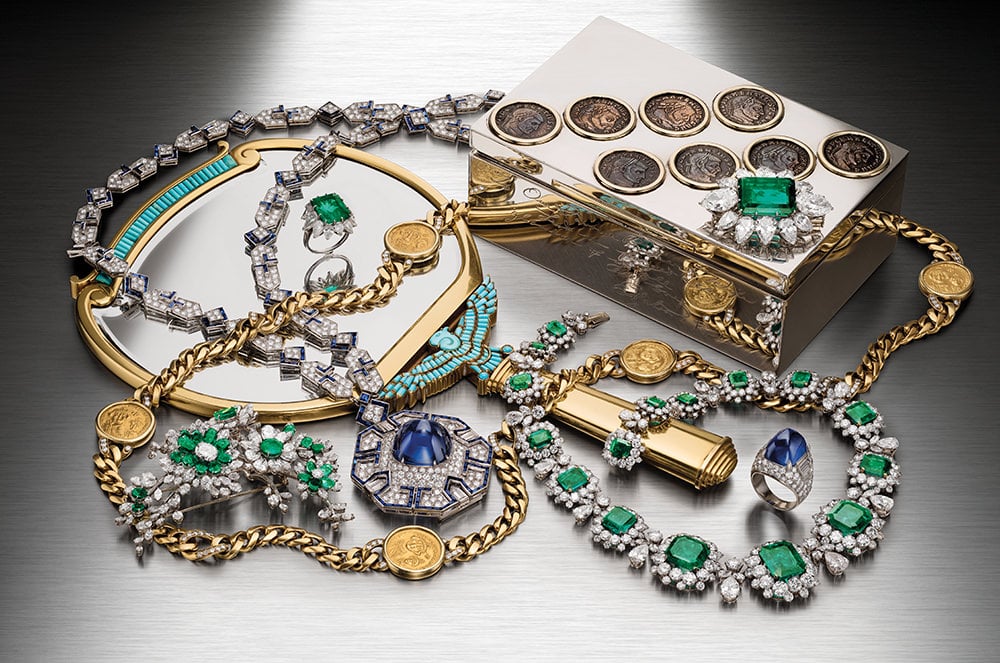
Group of jewels formerly in Elizabeth Taylor Collection., ca. 1960. Bulgari Heritage Collection.
Centuries of history are embedded in these walls, some dating back to the 16th century. Stately edifices once reserved for Russian tsars were torn down by the Bolsheviks in 1917, only to be rebuilt after the fall of communism. Today, they stand as witnesses to the tumults of Russian history over the last century.
Bulgari was founded in Rome in 1884 and has witnessed its own share of history in 134 years. Often steered by the unbridled passions of glamorous women whose lives and changing tastes guided its evolution, the distinctive artistry of Bulgari from the late 19th century to the 1990s is covered by this show.
“Tribute to Femininity” showcases pieces never before seen by the public, like the splendid aquamarine and diamond tiara worn by the Infanta Beatriz on her wedding day. The piece—something borrowed, something blue—had been lent to the exhibition by Beatriz’s mother, Queen Eugenia of Spain, who wore it at her own wedding in 1935. The same cherished family heirloom was sported, sans aquamarines, by the Infanta’s daughter Olimpia Torlonia, when she married in 1965.
A Flair for the Dramatic
Bulgari tells the story of women, ranging from “aristocrats to film stars, socialites to businesswomen,” who lived by their own rules and chose Bulgari’s jewels to echo their own fiery personality.
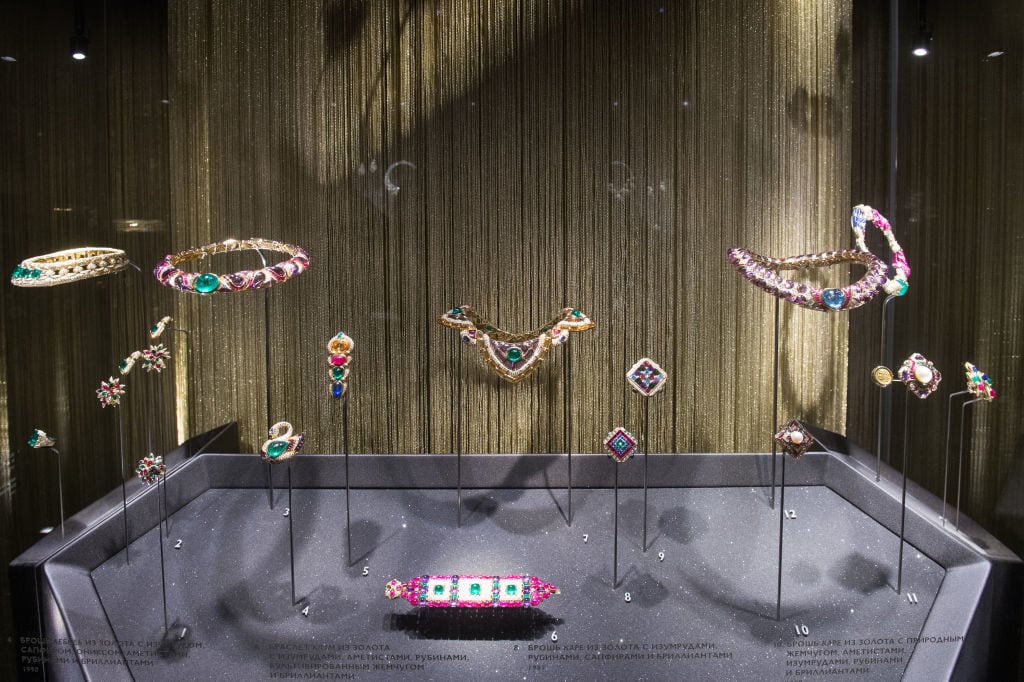
Installation view of the exhibition “Bulgari: Tribute to Femininity” at the Kremlin Museum in Moscow, Russia. Photo by Victor Boyko/Getty Images for Bulgari Russia.
The jeweler’s history is closely intertwined with that of Rome’s Dolce Vita, a period widely remembered for the torrid love story of Elizabeth Taylor—an insatiable consumer of jewels—and Richard Burton, whom she had met on the set of Cleopatra in Rome. Their blazing on-again-off-again romance, marked by two marriages and two divorces to and from one another, was punctuated with precious mementos from Bulgari.
Taylor’s famous Colombian emerald necklace and her sautoi—with its 60-carat sugar-loaf sapphire pendant—are both on display in the show. They were repurchased along with nine other pieces by Bulgari for its Heritage Collection, some from the record-setting Christie’s auction of the screen icon’s jewelry in 2011. Actress Gina Lollobrigida’s 21-carat Colombian emerald and diamond-drop earrings set on platinum are also here, acquired by Bulgari at Sotheby’s in 2013.
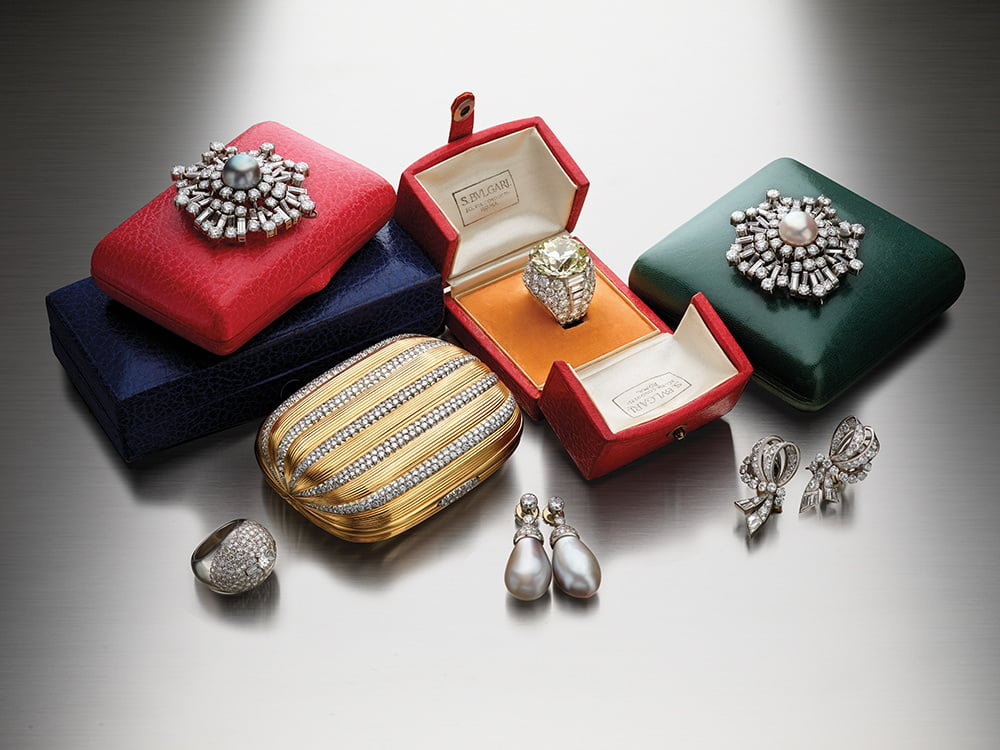
Group of jewels formerly in the Anna Magnani collection, (ca. 1960). Bulgari Heritage Collection.
Anna Magnani, unforgettable in the film Roma, Città Aperta, loved to buy her own jewels, and often with elegant insouciance wore a splendid 25.28-carat fancy yellow diamond Trombino ring, also in the show. Anita Ekberg, shot by Federico Fellini in La Dolce Vita in a captivating scene inside the Trevi fountain, loved her luscious parure of cabochon-cut sapphires, a shape that became a Bulgari signature cut.
“Bulgari’s founder, Sotirio Bulgari, was of Greek origin,” Boscaini said. “His silver ornaments reveal Byzantine elements that permeate through Russian tradition. Bulgari’s use of the cabochon cut is reminiscent of Byzantine art.”
Avant-Garde Art Meets Supreme Craftsmanship
Bulgari’s penchant for exotic combinations of precious stones like emeralds, rubies, and sapphires with semi-precious ones like amethysts, turquoise, coral, onyx, lapis lazuli, chalcedony, or malachite demonstrates more than a fearless artistry of color. There is an undeniable unconventionality, as seen in the ’90s with white porcelain beads of the Chandra collection that added both a new color and a milky tactility to the jeweler’s color palette, and to the timeless liberty of its style.
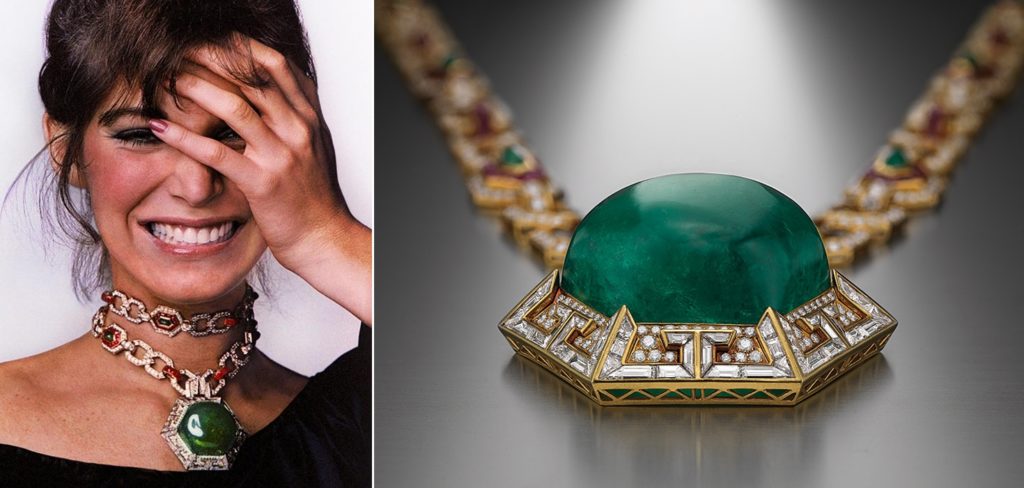
Bulgari’s Sautoir Necklace, Bulgari Heritage Collection (ca. 1970).
In jewelry, nonconformity cannot endure without a mastery of craft. The extraordinary variations of the sinuous Serpenti design, the iconic motif that for 40 years has been a pillar of Bulgari’s identity, are testimony to craftsmanship that evolves and projects itself with confidence into the future.
Technique at Bulgari is often at the service of wearability. The Parentesi jewels, the brand’s first modular design made up of interlocking metal components, and the flexible bands of the Tubogas motif—inspired by gas tubes in Rome—have brought a modern wearability to some very elegant pieces. They have allowed Bulgari continuously to update its avant-garde vision.
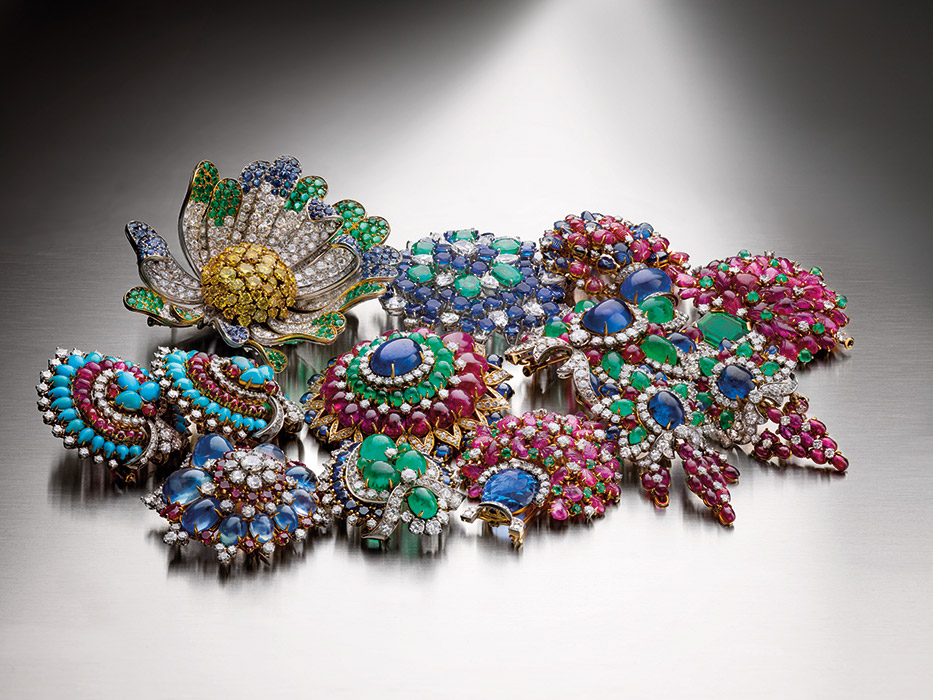
Bulgari’s Brooches and Earrings, (1959–1969), Bulgari Heritage Collection.
In the same halls where the tsars once roamed, and where the Russian vaults now safeguard 13,200 masterpieces of jewelry spanning eight centuries, Bulgari offers a feast for the eyes through a quintessentially Italian chapter in the long history of jewelry.
